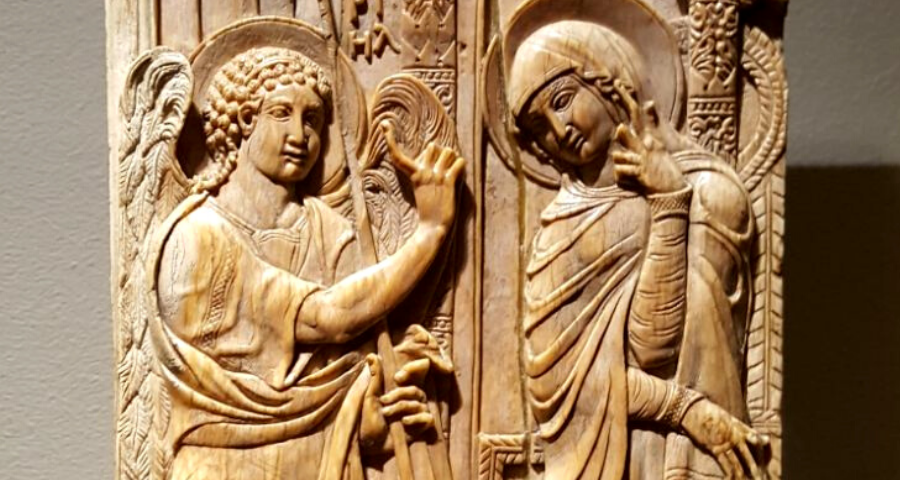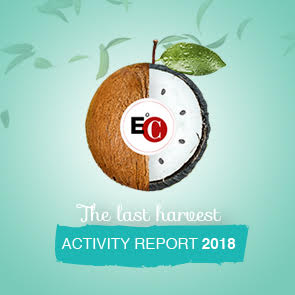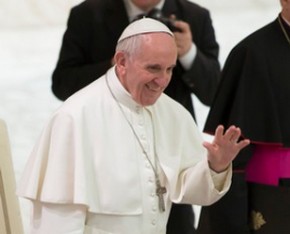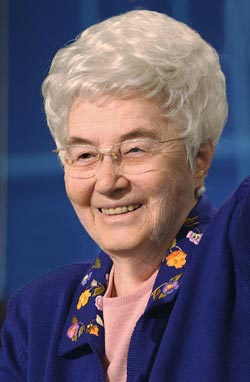The logic of charisms/6 - The maturity of a community lies in freeing itself from the myth of the perfect founder.
by Luigino Bruni
Published in Avvenire 26/09/2021
«And you, Moshe, why do you pray?» «I pray the God who is in me to give me the strength to be able to ask him some real questions»
Elie Wiesel, Night
The generative (and humble) use of a past heritage is a decisive task in order not to compromise the future, and unfortunately, one often makes mistakes in trying to identify what the best yeast really is.
«Be careful,” Jesus warned them. “Watch out for the yeast of the Pharisees and that of Herod!» (Mark 8,15) This is a word (loghion) of Jesus. Not easy to interpret, and about which many pages have been written, starting with the Fathers of the Church. Yeast is a strong word in the Bible, just think of the unleavened bread of Easter. It is a symbol of life, but also of contamination. Yeast is used for speech, for teaching, but most of all as a principle for world change. In the New Testament we find it as a synonym of the Kingdom of Heaven (Matthew 13,13). The reference to the yeast of Herod, of the Pharisees, of the "Sadducees" (Matthew 16,6) therefore has to do with the type of kingdom that the Messiah will bring to earth. At the time of Jesus, messianism had taken on a strong apocalyptic connotation, reinforced by the Roman occupation.
To the Pharisees the advent of the Messiah had to be accompanied by spectacular events, by signs that would confirm the imminent arrival of the new kingdom: «Then some of the Pharisees and teachers of the law said to him, “Teacher, we want to see a sign from you» (Matthew 12.38). The anti-Roman political reign desired by Herod is something different. Jesus definitely warns his apostles, shocked and overwhelmed by the signs of Jesus, not to embrace the messianic and apocalyptic theories: «For false messiahs and false prophets will appear and perform signs and wonders to deceive, if possible, even the elect» (Mark 13,22). The Gospels bring us dialogues of Jesus with the disciples on the understanding of his identity ("who do you say that I am?"), and the people closest to him were inside this process of revelation of identity. And so Jesus does everything he can not to make his sign-miracles spectacular, and as soon as he realizes that people stop at the sign and misunderstand the message, he slips away or dismisses the crowd.
So far the Gospels. If the temptation to follow the wrong kind of yeast affected even the first community of Jesus, it is likely that it is a phenomenon that can be repeated in the charismatic communities generated by the Church; that is, that "beware of the yeast of the Pharisees" is still valid and will continue to be so forever. Indeed, it is not uncommon in charismatic experiences that (in general) the first phase produces forms of messianic and apocalyptic theories, different readings of what the nature of the movement that is being started really is, of the meaning of the "signs" that are happening. The great successes and extraordinary events that accompany many charismatic beginnings generate various interpretations of the destiny and real task of that new "prophet" and his movement. The beginning, in fact, is often extraordinary, an anticipated Eskaton, and thus, almost inevitably, a spiritual-charismatic intoxication is triggered where everything seems possible. A sort of omnipotence is experienced, daring scenarios are dreamed of, apocalyptic destinies of universal salvation are prefigured for the group. Herod's political yeast and that of the Pharisees, come back to life (one also feels invested with a task of political and social change) where the signs are interpreted as messianic signals of the new era. The end of time feels close. Seen from the outside, these phenomena may appear delusions, but for those who experience them they are the most normal thing, and the misunderstanding of the world outside only serves to increase the self-belief of the messianic task.
In the beginning (and not only) of charismatic movements, there are many kinds of "yeasts" acting inside. However, unlike Mark's phrase where the yeasts of Herod and the Pharisees are only bad news, in charismatic communities even these apocalyptic yeasts can contain some positive elements, they resemble the "mother" yeast of the charism, and hence it is very easy to confuse them. However, if the apocalyptic and spectacular yeasts prevail, they can become very dangerous, actual neuroses that generate a lot of damage (economic damage, manipulation, abuse), even when everything happens in good faith. There is also another decisive element in charismatic communities. The founders of these communities, in general - these arguments must always be taken as tendencies not as theorems - do not interpret the part of Jesus where he invites the disciples to be careful with other kinds of yeast. Not infrequently they are like the apostles who "do not understand", and end up getting involved in the same apocalyptic scenarios.
In many concrete historical experiences, the first person being deceived by the wrong type of yeast may very well be the founder himself who, when while honest (and in general he or she is), takes a long time to understand that his "kingdom" does not lie in the great things he has seen happen, that the signs are only grace, they are the beautiful room of the honeymoon hotel suite not a room at home. He does not immediately understand that the fulfillment of his charisma does not lie in conquering the world, but in resizing, while becoming a small flock, in following a career that culminates in Golgotha. The founder is the first spectator of the signs he sees happening around him. He is stunned and astonished, enchanted by his own spells, healed by his own healings. Thus, the members of the charismatic communities find themselves the first victims of the yeast of the Pharisees, because they have no one to protect them, but rather everyone, in agreement, to convince them, everyone convincing one another. The founder knows that these signs are not his work, but he also knows that he has received a gift-charism without which those signs would not exist.
In the first phase the awareness of being only an instrument of an Elsewhere is very strong, but then a fundamental passage occurs, almost always without anyone really wanting it. The splendor and strength of the extraordinary signs end up convincing the founder that although he is merely a small and simple instrument, it is the charisma that is truly extraordinary, unique, the definitive answer to all questions. It is evident that praising and exalting the charism is a way to exalt and praise the Giver of the charism; but in the meantime over time this "third party" between the founder and the Spirit (the charism) grows and takes on a life of its own. The founder, then, gradually ends up identifying himself with the charism, thanks above all to his disciples who end up attributing all the prerogatives of the charism to him, which make him his own hypostasis, and them the hypostases of the hypostasis. Everyone knows in the beginning that the charism is penultimate in the order of things, and that by serving the charism the divine is being served, but in the meantime the charism and founder grow, and continue to grow, on and on. The people around the founder, seeing the same signs with increased amazement, therefore perform the decisive function of confirming his conviction of having received a task of salvation for the Church and for the world, giving way to a circuit of admirable and unshakable self-conviction. And everyone proceeds to forget, in good faith, that the founders - like the biblical prophets - are human beings, and therefore make mistakes. They deceive themselves, they are not always good interpreters of the "voice" that inhabits them, and they need their whole life and many encounters with it to learn to recognize it among the many voices available.
The coexistence of several different kinds of yeasts is an inevitable phase for many charisms. The problem of this phase does not lie with the founder, but in the ability (generally low) that the following generations have to distinguish the various types of yeast. And so the process goes on, until (and if) one day someone begins to realize that the charism has taken the place of the Giver of the charism. In what sense? The followers only know the words of the Scripture promoted by the charism, they only pray the prayers of the charism, they only know the "stories of salvation" told by the charism, everyone speaks and loves only in the ways and forms of the charism, and they only read the books of the charism. If not defused these mechanisms, often put in place in perfect good faith, are among the main causes of extinction of charismatic communities once their founders are gone (sometimes even before this happens), especially when dealing with very rich charisms.
Finally, there is also another decisive aspect. If it is true that the various yeasts coexist in the first days of a charismatic community, then it is also true that among the words and acts of the beginnings of a charism there are also immature words not borne from the mother yeast, which - when things go well - time will correct, through encounters, disappointments and tests. Hence, an important consequence: when subsequent generations return to the DNA of the charism to attempt the necessary reforms, it is essential that they identify the good original yeast, distinguishing it from that of the Pharisees. However, more often than not this is a highly complicated operation, because by now the good yeast has been superimposed on the other yeasts, and they are all very similar. The other yeasts have also generated life and fruits, often constituting intermediate stages necessary for the good fruits that came later at a later phase. Over time they have contaminated each other, hence we must avoid the risk of taking all yeasts for good ones, while also avoiding the opposite risk of throwing them all away, including the mother yeast.
In communities that find themselves in a post-founder phase, it is essential that the reflection on the good hard core of the charism becomes a plural and antagonistic experience, because the ideas regarding the good yeast are and must be varied and diversified; and the people in charge need to apply a special kind of meekness to keep this tension alive without creating heresies and orthodoxies, nor agencies intent on a single authentic and unique interpretation of what a good yeast is. Because when this internal pluralistic dialogue is lacking and only one reading of the past is affirmed, we will inexorably find ourselves inside an ideological creation, and that single reading will be wrong. The truth is symphonic: the four Gospels, Paul and the other letters, not to mention the apocryphal Gospels, had various messianic-apocalyptic theories about Jesus, and this is where the Church found its balance over time. Judging from the history of charisms, we know that it is highly unlikely that the good mother yeast is constituted by the spectacular events, the great apocalyptic perspectives, the extraordinary visions, the earthquakes, the fire, instead it is most probably found in the small, in the ordinary, in the simple, in Elijah's "subtle voice of silence".
This long conversation has two practical consequences. First of all, there are always wrong, partial, unripe theses right from the start among the words of a founder and the maturity of a community lies in being able to admit that they can be wrong (and not just misinterpreted). This is a decisive exercise that frees communities from the myth of the perfect founder that almost always blocks them in their generative growth and prevents them from approaching the humanity of the founder while veiled by his myth. Making a mistake in the relationship with the heritage of a charism means compromising the quality and existence of its future. Furthermore, going back to the words of the beginnings of a charism is not in itself a guarantee of reaching the heart of the charism in question, because the various yeasts begin to develop at a very early stage. The most important words may arrive later, when events and history have caused the charism to mature. The decisive words of Jesus were his last. Being able to discern and differentiate between different kinds of yeast is the most important occupation of communities capable of a future.








